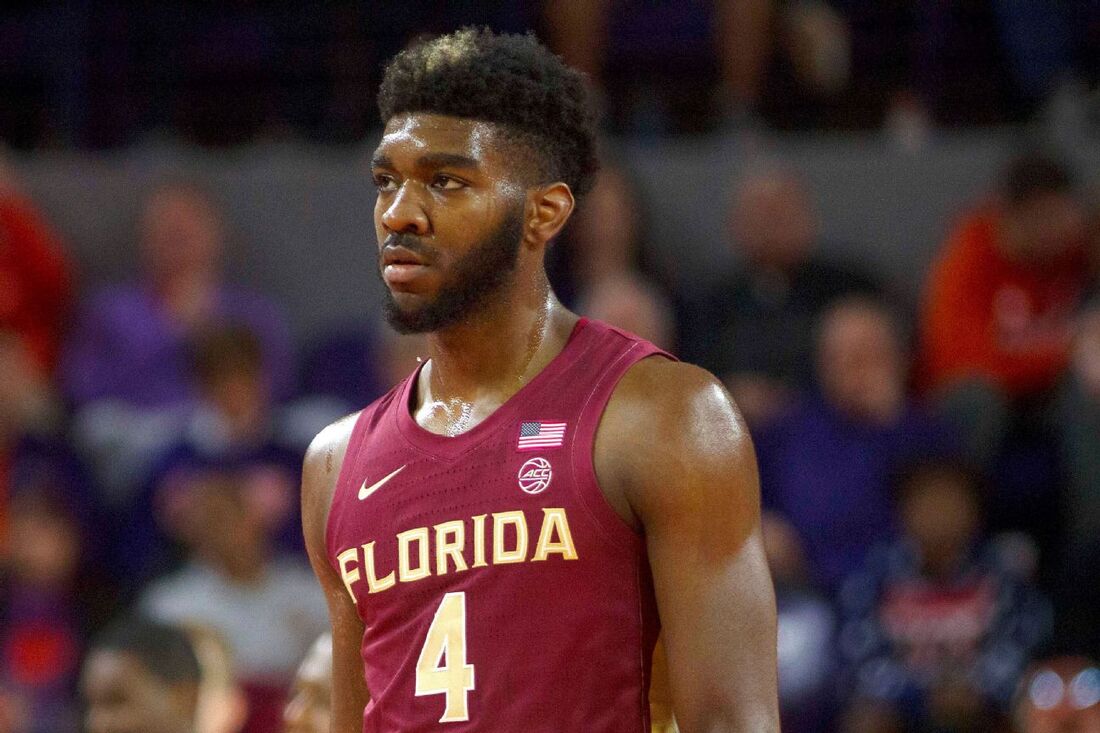|
Most major publications have included Patrick Williams, a versatile forward out of Florida State, in their first-round mock drafts since January. Over the last few months, it seems his name has gained some steam to raise higher in the first round, entering the lottery and approaching top-ten pick status. There's reason for this. Williams is a solid defender with offensive upside. It seems people are falling in love with the athletic profile of Williams and who he could be, more than who he is and what he's tangibly good at. Modern NBA playstyle is pretty largely dependent on who the team puts at the 4. A stiffer, less mobile player may get blitzed by smaller lineups. A small 4 could have trouble if asked to guard a big. The position unlocks switchability, guarding secondary screeners and has a massive impact on floor spacing. But any 4 man has to be good in practice, not just in theory. Countless prospects who have good athleticism, size and look the part get drafted based on the promise they have to unlock that position for a team. Williams may become that guy, but his offensive skill set has some violation of a principle I find at the heart of prospect evaluation: be good at what you do often. StrengthsIn the vein of "be good at what you do frequently", Williams is a terrific defender. He's good on-ball and off-ball, guarding 3s and 4s. He takes great angles, and the experience in a switching scheme at Florida State will only benefit him in the NBA. He's been taught well, has strong defensive awareness and is a very good helper. He knows when to gamble, protects the rim and contests while backpedaling. It's the offensive side that bothers me a bit with Williams. What he's good at– scoring off the bounce and in the mid-range– isn't something I look for a ton from the 4 spot. Williams was average at the rim and only 32 percent from behind the arc. Being good in the mid-range is only a valuable shot if its one your teammates depend on you to make in late-clock or isolation situations. But Williams isn't explosive enough of a ball handler or talented enough 1v1 scorer to find himself in either spot. Those who ogle over his pull-up scoring as a sign of potential don't align with how I view functional skill. There's some benefit to having a player like Williams at the 4. He can handle in unique ball screen sets, and he's a better passer than he gets credit. But I'm not totally sold on him being a strong catch-and-shoot threat, which handicaps all the other skills he brings to the table. Improvement Areas"Be good at what you do frequently." Keep that mantra in mind as we go to where Williams needs more consistency. Think about what NBA 4s are asked to do, what they'll need to do on defense to be impactful and what their offensive roles are relegated to in a supplementary role. Williams isn't an alpha on offense, so all the skills he needs have to be built around how he meshes in accordance to top-level talent. I'm concerned in some ways. Let's touch briefly on the defense first. At Florida State, the Seminoles were taught to switch penetration. When a switch happens, the man guarding the ball on the perimeter has one job: force a drive to the basket. Once that occurs, teammates will swarm the ball if help is needed, and the man who initially forced the drive will then switch to an off-ball position. It's a way of preventing 3-pointers, but against so many great passers, that scheme is unsustainable. What a normal structure of defense might reveal is that Williams gets beat in straight lines by backcourt foes with great speed, perhaps limiting the overall profile of how switchable he really is. On the offensive end, the analytical approach to the game is dictating frontcourt 4s be good in two areas: finish at the rim and step out to 3. Williams isn't great in either area. While the numbers around Williams (56 percent at the rim) aren't poor by any means, he's left a lot of points on the table. He's not a tremendous vertical athlete and gets plenty of shots blocked at the hoop. Because he's not overly quick and doesn't sky up for finishes, he's fairly reliant on creating contact and using his shoulder to carve out space. He struggles to decelerate, meaning he's not a great passer on the move when attacking closeouts and could be a charge candidate. The shooting consistency is a bigger deal. He's pretty stiff on catch-and-shoot looks, and his high-arching shot is in need to tweaking. His numbers really dropped as the season went on and competition level raised. His misses were way off, missing with air balls and left or right of his target. There's a lot to tighten up, and too much for me to put him into the higher ranks on my board. Overall Analysis and Draft ProjectionWilliams is a fringe first-rounder to me, and it stems from what I look for in someone at his position.
We've established he's not an elite offensive threat and will be playing some form of complimentary role. The pull-up scoring is decent in a vacuum, but if he's not explosive or a good enough finisher, he becomes a tough-two guy who aims for that shot, and that's less than ideal. It's hard to evaluate Williams without seemingly speaking out of both sides of my mouth. I love his defense in many respects, but he needs a lot more on offense for me to feel comfortable with where he's being projected.
0 Comments
Leave a Reply. |
AuthorAdam Spinella is a Division III basketball coach using what he's learned about scouting and skill development and applying it to the NBA Draft Archives
November 2020
Categories |

 RSS Feed
RSS Feed
